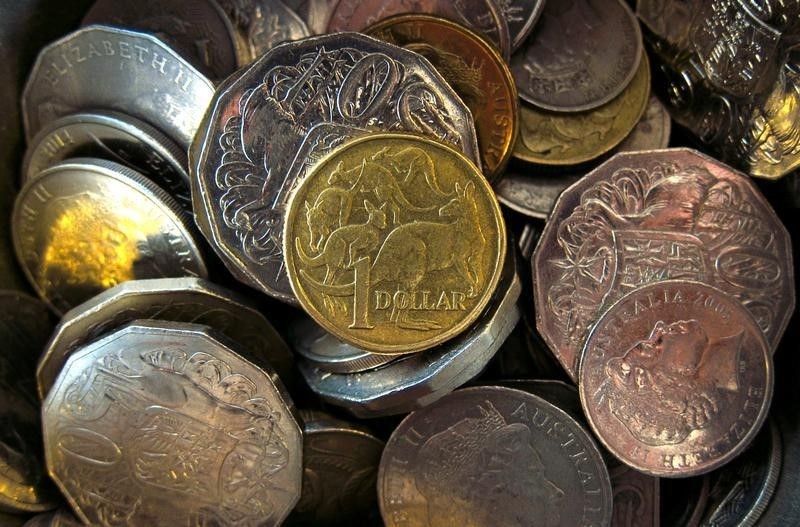By Cecile Lefort and Charlotte Greenfield
SYDNEY/WELLINGTON, Aug 24 (Reuters) - The Australian and New Zealand dollars dipped modestly on Wednesday with investors reluctant to take big positions ahead of a speech by the U.S. Federal Reserve Chair later in the week.
The Australian dollar AUD=D4 edged down to $0.7605, having been trapped for the past three sessions in a narrow band of $0.7584 to $0.7612.
It touched a three-month high of $0.7760 earlier in August but has recently been plagued by conflicting views on U.S. monetary policy. Investors now await fresh clues from the Fed Chief at the central bankers' annual gathering in Jackson Hole.
"There's an increasing level of uncertainty leading up to Jackson Hole meeting," said Stephen Innes, a senior currency trader at OANDA Australia and Asia Pacific.
"Some market segments are viewing the eventuality of a U.S. rate hike as negative for carry trade."
Fed fund futures 0#FF: imply around a one in four chance of rate hike in September, rising to around a 50 percent chance by December. A quarter-point hike is not fully priced in until September next year.
Carry trades, where the investor borrows at low rates in yen, pounds or euros to buy higher-yielding assets such as the Aussie and kiwi, have been a major support for the Antipodean currencies.
A drop in carry trades would be welcomed by both the Australian and New Zealand central banks which have been calling for lower currencies to support their economies.
The New Zealand dollar NZD=D4 was largely flat on Wednesday at $0.7273 as a mild overnight rally was stemmed by slightly weaker-than-expected trade data.
New Zealand's trade deficit was NZ$433 million ($315.40 million), more than the NZ$350 million expected by economists. kiwi had climbed as far as $0.7345 on Tuesday to flirt with a 14-month peak, following comments by Reserve Bank of New Zealand (RBNZ) Governor Graeme Wheeler that were taken as less accommodating than bears had been betting on.
New Zealand government bonds 0#NZTSY= gained, sending yields 2 basis points lower at the long end of the curve.
Australian government bond futures were marginally higher with the three-year bond contract YTTc1 unchanged at 98.640. The 10-year contract YTCc1 added half a tick to 98.1450, while the 20-year contract YXXc1 edged up 1 tick to 97.6100.
Australian two-year bonds AU2YT=RR now offer only 65 basis points more than their U.S. counterpart US2YT=RR , the smallest premium in a decade.
Yields on two-year bonds AU2YT=RR stood at 1.43 percent, having touched an all-time low of 1.38 percent on Tuesday and below the overnight cash rate of 1.5 percent.
